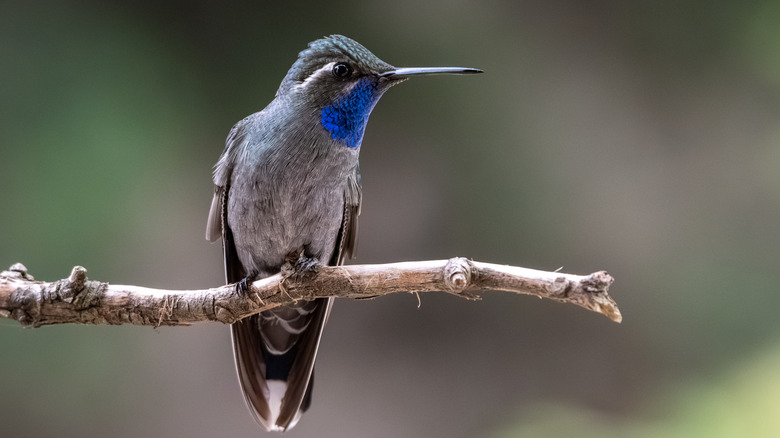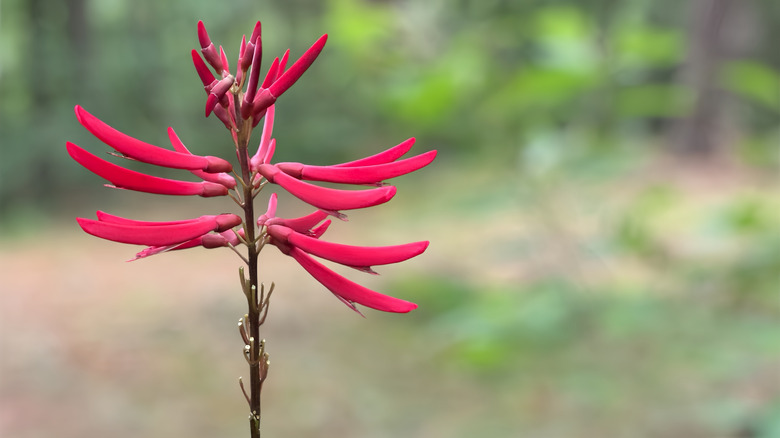The Red Flowering Tree That'll Bring More Hummingbirds To Your Yard
Did you know hummingbirds have a favorite color? Hummingbirds are most attracted to red, a vibrant color that acts like a dinner bell for these feathered friends. While they're also attracted to other warm colors that fall into their vision spectrum, like orange or yellow, red has a special place in the hearts of these little birds. As a result, if you're looking for a way to kick off your own pollinator garden and attract more hummingbirds to your yard, this eye-catching red flower can be a great place to start.
The coral bean (Erythrina herbacea) can grow as either a shrub or a small tree, depending on its environment. From spring through fall, it can produce long-lasting red blooms with a funnel shape that hummingbirds adore. While their seeds can be toxic if ingested, they can be collected and replanted to expand your garden for visiting hummingbirds and other pollinators.
Overall, the coral bean is considered low-maintenance, which makes it perfect for beginners looking for easy plants to attract hummingbirds. If this gorgeous flower sounds like the right choice for your yard, the first step is learning more about the care it needs including factors that can impact its ability to grow in your garden.
How to grow coral beans in your garden
Coral beans are perennials, and if you want to take advantage of its year-after-year blooms without needing to replant, you'll need to live in the right areas. These plants are hardy in USDA zones 6 through 9, lining up with its natural habitat in warmer, coastal areas. f you grow coral beans in containers instead of in the ground, you can move them indoors or into your greenhouse for the winter. While it does thrive in full sun, as many flowers do, coral beans can also be grown in partial shade. As a result, if you need to fill in a lower light corner of your yard while still encouraging hummingbirds to visit, coral beans can be a great option.
Day-to-day watering depends on the coral bean's growth stage. Before it's established, consistent moisture is key. Once mature, it can tolerate periods of drought. Pruning can also be important for taking advantage of those long-lasting blooms. By deadheading spent flowers and removing them from the plant, you can enjoy more blooms on your coral bean for longer.
If you're planting coral beans for the purpose of starting your own pollinator garden, there are a few factors to keep in mind, as well as to avoid. As a result, when you're tending to wildlife, you may need to adjust your garden chores. One of the most common mistakes to avoid with a pollinator garden is using pesticide, which often do more harm than good.

